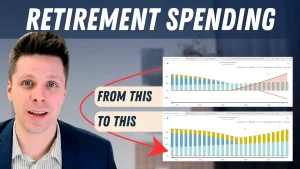[vc_row css=”.vc_custom_1612380408194{padding-top: 20px !important;padding-bottom: 20px !important;}”][vc_column][vc_column_text]While working, most people don’t pay much attention to the cost of their health benefits plan as it’s something they are required to pay into.
However, a health benefits plan becomes optional once retired, so make sure you have the proper coverage that fits your needs. You may be eligible to continue your benefits through your work plan, or you may have to go out and find an individual plan for yourself.
Should you pay for this coverage?
A health benefits plan is essentially a form of insurance. As with any form of insurance, the house usually wins. Don’t get me wrong; I’m not anti-insurance. There is a definite need for it when you are protecting yourself against a catastrophic event.
Life insurance is needed to make sure your family has been looked after.
Disability insurance is a must to protect your own lifestyle.
Fire insurance is needed to replace your home.
But when it comes to health benefits, there isn’t really a catastrophic event that you are protecting yourself from, so if you have a plan, make sure that you are getting your money’s worth.
Review your options
Bob is 60 years old and recently retired. He’s looking at the following hypothetical health benefit plans.
Plan A
For $750/year, Bob would receive:
- $300/year for Prescription Drugs
- $300/year for Chiropractor, Physiotherapist, Psychologist
- $1,000 Accidental Dental
- 1 Lifetime Ambulance Ride
- $10,000 for accidental death
Even if Bob uses all his prescription drug and physiotherapy coverage, he’s still short $150 per year. Is it worth paying an extra $150 for the remaining coverages? In this case, Bob would likely be better off paying for these services out of pocket.
Plan B
For $1,300/year, Bob would receive
- $2,500/year for Prescription Drugs
- $450/year for Chiropractor, Physiotherapist, Psychologist
- $300/ year for Massage Therapy, acupuncture
- $500 every 5 years for hearing aids
- 75% of medical equipment
- $500/year for dental
- 1 eye exam every two years
- 1 Lifetime Ambulance Ride
- $15,000 for Accidental death
In this scenario, it’s a no-brainer for Bob to pay for the coverage if his prescription drug cost is already above $1,300 per year.
However, if Bob looks at his current health and determines that he would only claim $300/year on this plan, is it worth paying an extra $1,000 per year for services he may need in the future?
For some, the answer would be no, as they’d rather roll the dice and pocket the extra $1,000. Others would be happy to pay the additional $1,000 per year as they don’t want to stress about not having coverage.
Wrapping it up
If you’re looking at purchasing a plan or already have existing coverage, make sure to:
- Review what you’re covered for
- Determine how much you use the plan yearly
- If you’re not using the plan to its full potential, ascertain if it’s worth paying extra to “insure yourself” against services you may need in the future.
[/vc_column_text][/vc_column][/vc_row]






